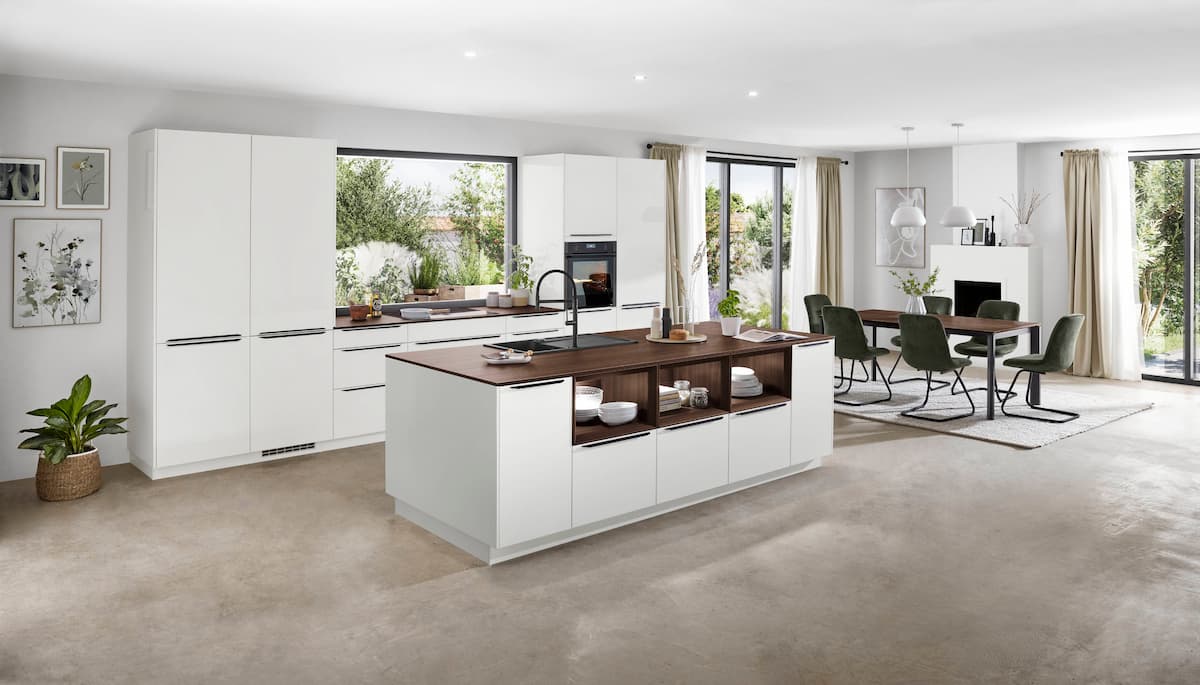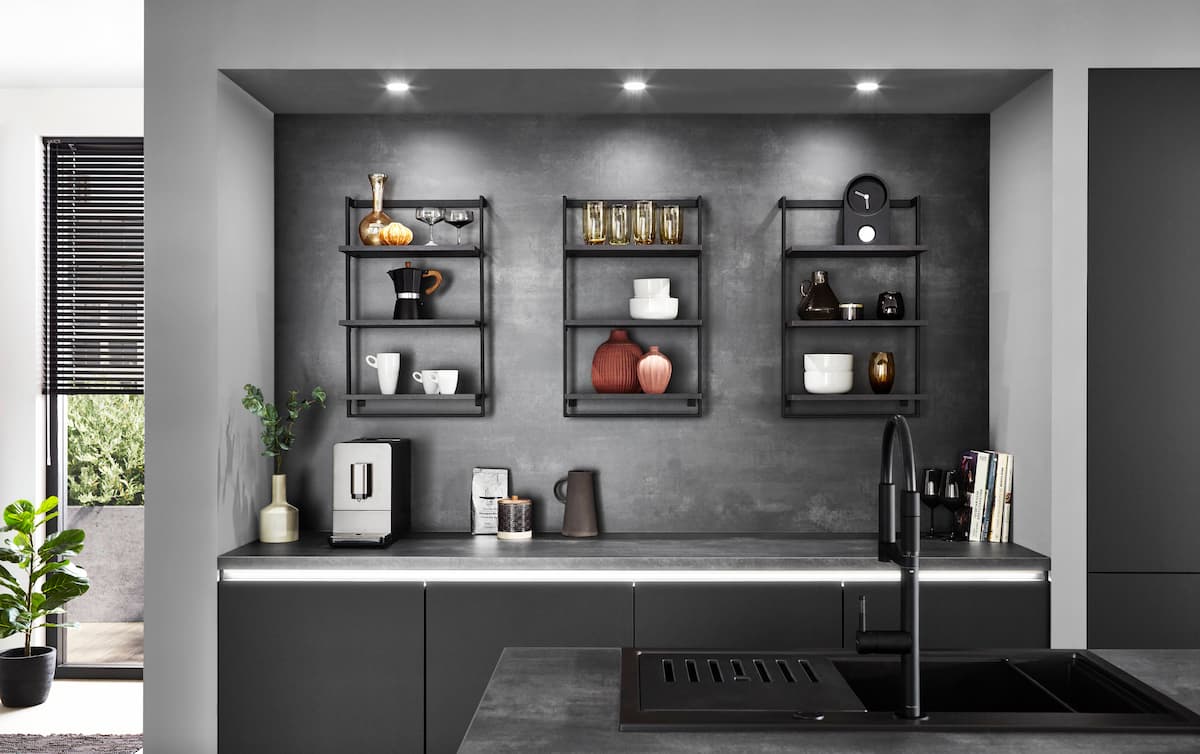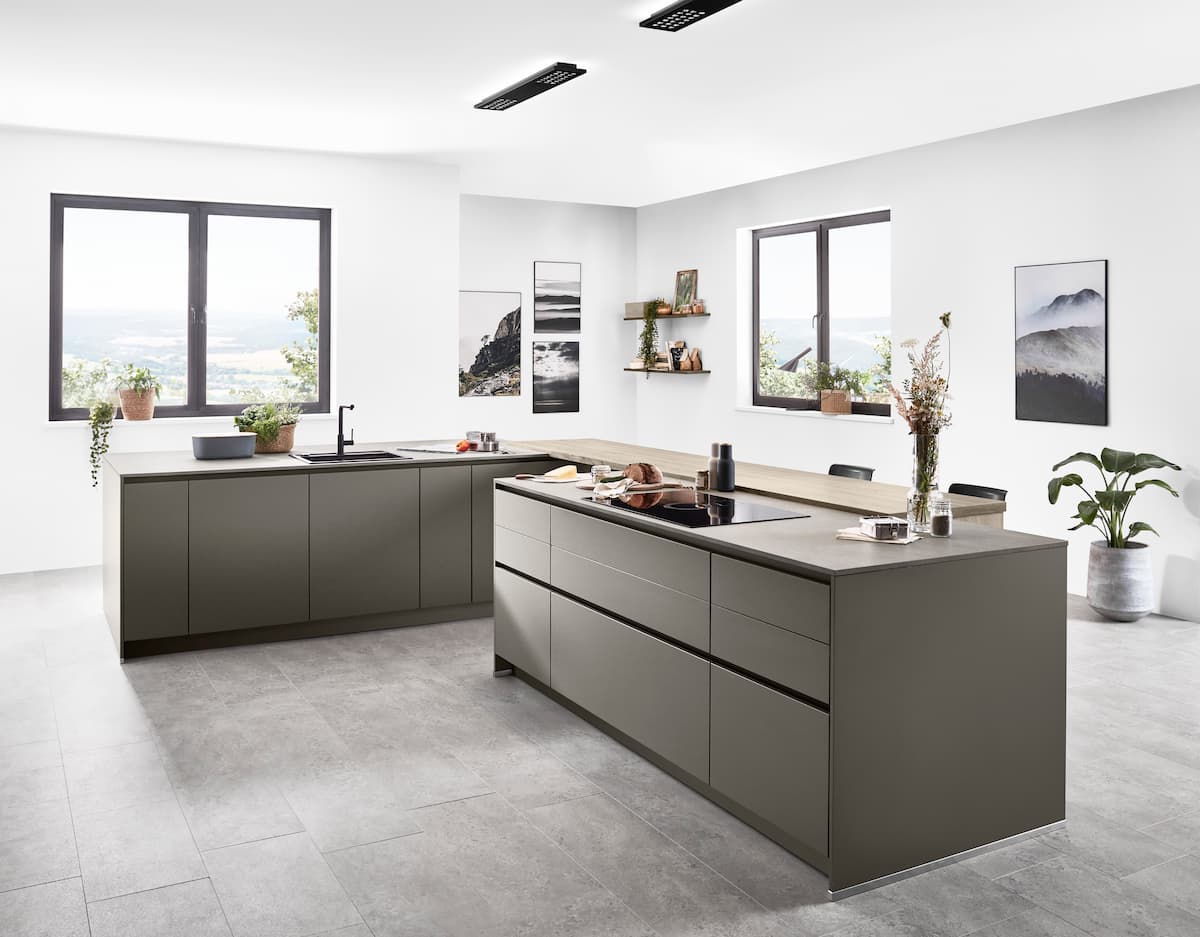
A kitchen island, a versatile and functional centerpiece, has become a staple in many modern homes. More than just a place to prepare meals, a well-designed kitchen island can serve as a breakfast bar, a workspace, or an entertaining hub, ultimately a versatile feature that can transform your kitchen into a more efficient and enjoyable space.
In this blog post, we will be exploring various kitchen island design tips that will help you maximize the use of your kitchen island, from creating a cozy breakfast nook to hosting fun, memorable gatherings.
Kitchen Island Design Ideas
A kitchen island is a versatile piece of furniture that can serve as a breakfast bar, workspace, or entertaining hub. It’s a popular addition to modern kitchens because it offers increased counter space, improves workflow, and adds a touch of style.
When planning your kitchen island, it’s important to consider its overall design as this will greatly impact both the style and functionality of your kitchen. Consider the following design ideas:
- Modern: Opt for clean lines, sleek materials, and neutral colors. Incorporate stainless steel, quartz countertops, and minimalist lighting. This modern aesthetic creates a sleek and sophisticated look that is perfect for contemporary homes.
- Rustic: Create a warm and inviting atmosphere with natural materials such as wood and stone. Add rustic elements like exposed beams, farmhouse sinks, and copper accents. This rustic style is ideal for creating a cozy and welcoming kitchen space.
- Contemporary: Blend modern and traditional elements for a unique look. Incorporate bold colors, geometric patterns, and statement lighting. This contemporary style offers a fresh and innovative approach to kitchen design.
Note how each style is achieved using different materials in our kitchen island design tips. This is important as each has different pros and cons and should be seriously considered before all else. The materials used in your kitchen island will affect durability, maintenance, and aesthetics.
Here’s a quick overview of the benefits of popular kitchen island countertop materials:
- Wood: Wood adds warmth and natural beauty to a kitchen. Consider using hardwood such as oak, maple, or walnut.
- Stone: Stone countertops provide a durable and luxurious surface. Popular options include granite, marble, and quartz.
- Laminate: Laminate is a more affordable option that offers a variety of colors and patterns while retaining many qualities of other materials, like having great scratch resistance, being easy to clean, and providing ample resistance to impact and heat.
Rest assured, you don’t have to adhere too strictly to the proposed kitchen island design tips and ideas we’ve shared. If you like a certain style but want a countertop of a different material, that’s possible; but you may want to consider other complementary choices like color, finish, and more to ensure the aesthetics of your kitchen island remain in line with your intended style.
Don’t forget to add personal touches to your kitchen island. Incorporate decorative elements such as artwork, plants, or family photos to make it your own.
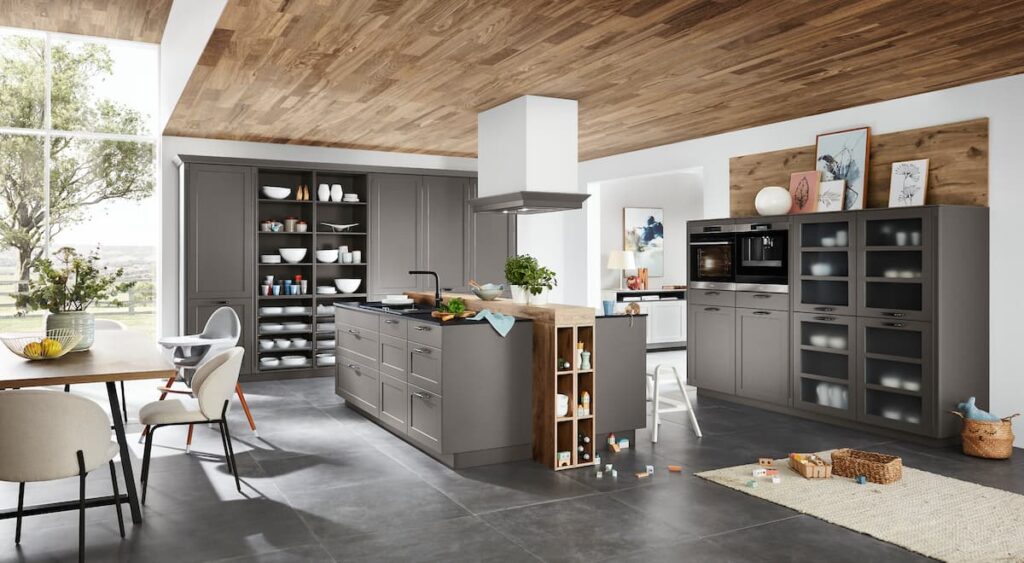
Lighting Design Tips Your Kitchen Island
Proper lighting is essential for a functional and visually appealing kitchen island. After all, kitchen islands will take up a considerable amount of space and will likely be the center of your cooking space. As such, you’ll want to pay extra attention to ensure it’s equipped with purposeful lighting designed to be both functional and aesthetically pleasing.
Here are some popular lighting-specific kitchen island design tips:
- Pendant Lights: These stylish fixtures can be hung directly above the island, providing focused illumination. Choose pendant lights that complement your kitchen’s overall design.
- Under-Cabinet Lighting: Install LED strips or recessed lighting under the cabinets that overhang the island. This provides task lighting for meal preparation and workspace activities.
- Recessed Lighting: Install recessed lights in the ceiling above the island for general illumination. This can create a warm and inviting atmosphere.
- Natural Light: If possible, position your kitchen island near a window to benefit from natural light. Consider using sheer curtains or blinds to control the amount of sunlight.
We’ve found that regardless of the style you’re going for, a mixture of different lighting elements goes a long way to ensure all your kitchen island lighting needs are met. This is because even though some lighting options may be better than others for specific functions, the kitchen island is such a versatile space that it will likely be used for many different circumstances, each calling for different lighting needs.
Be sure to consider the following when choosing your lighting options:
- Layer lighting: Combine different types of lighting to create a balanced and versatile lighting scheme.
- Dimmable switches: Install dimmable switches to adjust the lighting intensity to suit your needs.
- Energy-efficient bulbs: Opt for LED bulbs, which are more energy-efficient and have a longer lifespan.
- Consider the task: Unfortunately, there are no one-size-fits-all kitchen island design tips when it comes to lighting. We recommend choosing lighting that is appropriate for the activities you will be performing on the island. For example, pendant lights are ideal for dining, while under-cabinet lighting is better for task-oriented activities.
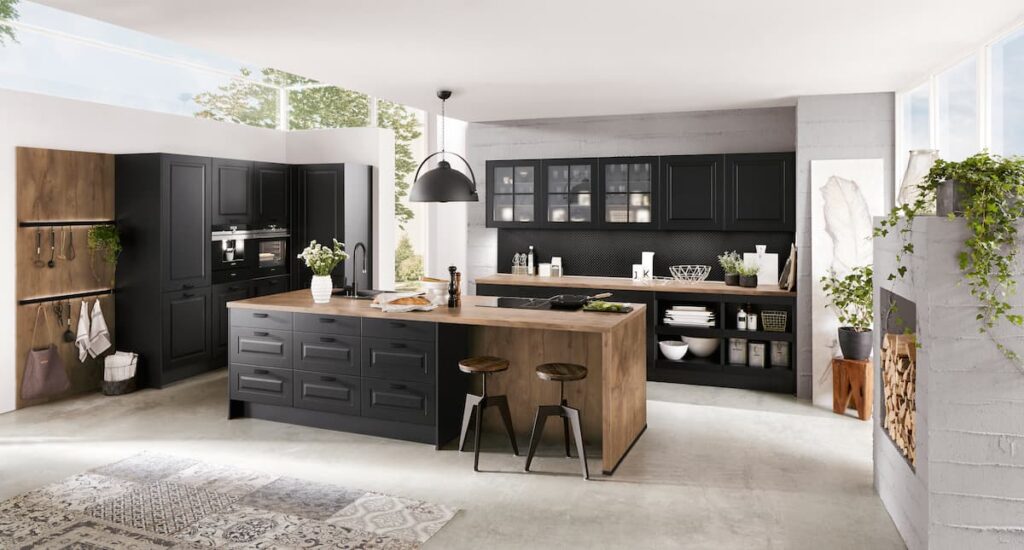
Electrical Design For Your Kitchen Island
A kitchen island often serves as a multifunctional space, requiring adequate electrical outlets to power various appliances and devices. When planning your kitchen island, it’s essential to consider the electrical requirements and incorporate appropriate solutions.
Here are some electrical kitchen island design tips for your kitchen island:
- Outlet Placement: Strategically place electrical outlets along the island’s countertop to accommodate appliances and devices. Consider the placement of appliances and their power cords to ensure easy access to outlets.
- Dedicated Circuits: For high-power appliances like blenders or food processors, consider using dedicated circuits to prevent overloading. This ensures consistent power and avoids tripping the circuit breaker.
- GFCI Outlets: If you’re thinking about including a nearby dishwasher or laundry machine, it’s important to install Ground Fault Circuit Interrupter (GFCI) outlets near water sources to protect against electrical shocks.
- Hidden Outlets: For a cleaner and more streamlined look, consider incorporating hidden outlets into your kitchen island design. These outlets can be concealed behind panels or within drawers, providing convenience without compromising aesthetics.
- Charging Ports: If you frequently use electronic devices in your kitchen, consider integrating USB charging ports into your kitchen island. This allows you to conveniently charge your phone, tablet, or other devices while working or entertaining.
- Under-Counter Outlets: Install under-counter outlets for appliances or devices that are typically placed beneath the countertop, such as blenders or coffee makers. This eliminates the need for unsightly cords trailing across the countertop.
- Wiring and Cabling: Ensure proper wiring and cabling for all electrical components within the kitchen island. Hire a qualified electrician to handle the installation and ensure safety compliance.
Planning out how you’re going to include electrical wiring and outlets for your kitchen island is a small step you can make to significantly improve your space’s aesthetics, ensuring a clutter-free, functional, comfortable design.
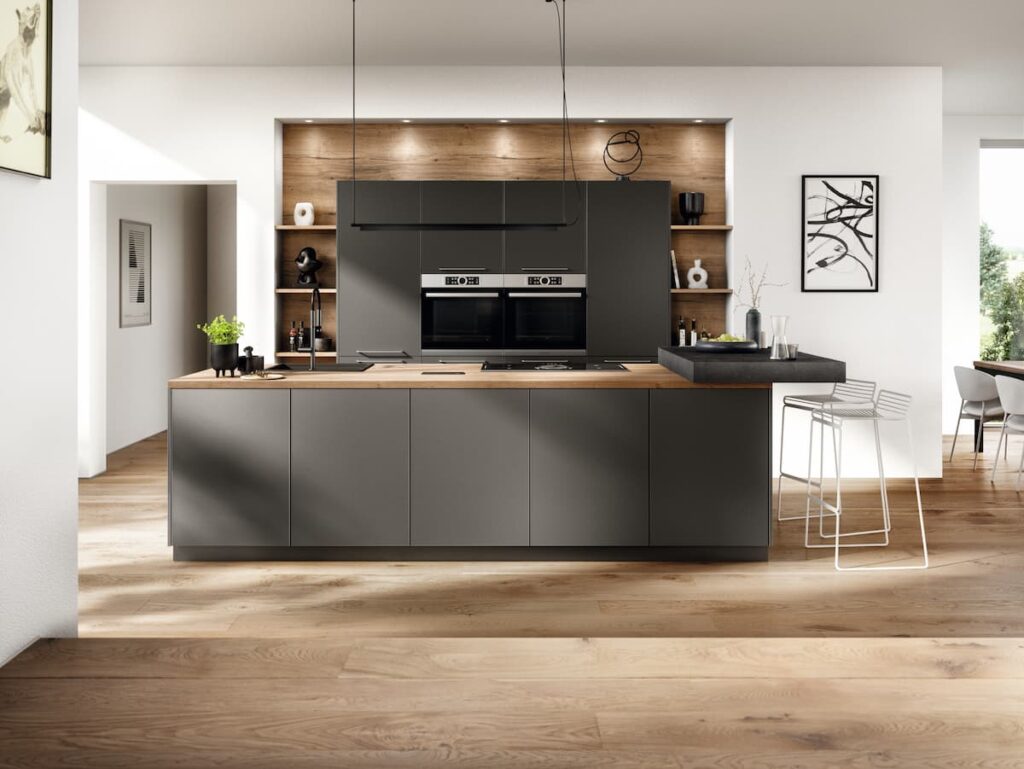
Kitchen Island Design Tips Based On Different Functionalities
A kitchen island can serve various purposes, from a breakfast bar to a workspace or an entertaining hub. The design of your kitchen island should complement its intended function. In this section, we will explore kitchen island design tips tailored to different functionalities, helping you create a kitchen island that perfectly suits your needs.
Breakfast Bar
A well-designed kitchen island can easily double as a breakfast bar, providing a casual and convenient dining space. The key to creating a comfortable breakfast bar is to ensure proper ergonomics. The countertop height should be approximately 36 inches (91 cm) for seated dining. Consider using bar stools with adjustable heights to accommodate people of different sizes.
To create a stylish breakfast bar area, incorporate elements that complement your overall kitchen design. Add a few bar stools with unique backs or colorful cushions. Consider installing pendant lights above the breakfast bar to provide targeted illumination. For a more cozy atmosphere, add a small rug or a few throw pillows.
Workspace
Your kitchen island can also serve as a functional workspace. This is especially beneficial if you have limited counter space in your main kitchen area. Incorporate features such as built-in drawers, shelves, and electrical outlets to create a dedicated workspace.
When designing your kitchen island workspace, consider your specific needs. Do you need a place to pay bills, work on your laptop, or craft? Tailor the design to accommodate your activities. For example, if you frequently use a laptop, ensure there is a convenient outlet and enough space for a keyboard and mouse.
Here are some easy kitchen island design tips to help keep your space organized: invest in storage solutions such as drawer organizers, file trays, and a pencil holder. Consider using a cork board or a magnetic strip to display important documents or notes.
Entertaining Hub
A kitchen island can be the heart of your entertaining space. Its open design allows for easy interaction with guests while you prepare food. To create a welcoming and inviting atmosphere, consider incorporating elements such as a wine rack, a small bar area, or a built-in coffee station.
When hosting parties or gatherings, use your kitchen island as a focal point. Set out appetizers, snacks, or dessert displays. Consider adding decorative elements such as flowers, candles, or festive tablecloths.
To ensure a smooth flow of conversation, arrange seating around the island. Bar stools or comfortable chairs are ideal options. Remember to provide plenty of elbow room for guests to move around freely.
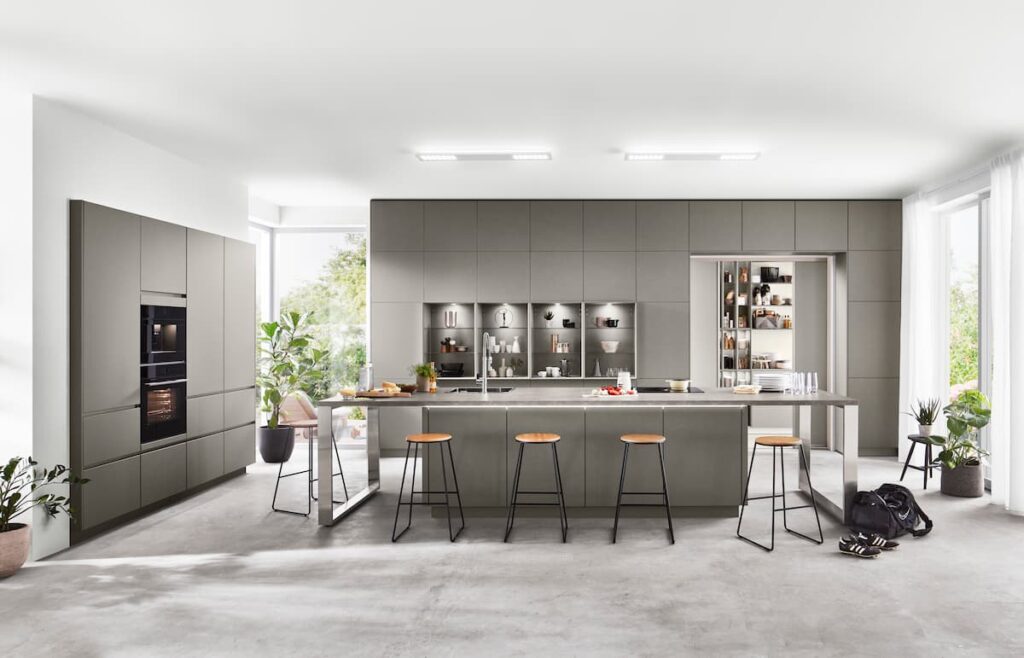
Storage Solutions
A well-designed kitchen island can provide ample storage space for your kitchen essentials. Incorporate features such as drawers, cabinets, and shelves to maximize storage capacity.
When planning your kitchen island storage, consider your specific needs. Do you need a place to store cookware, utensils, or small appliances? Tailor the storage solutions to accommodate your items. For example, if you have a collection of knives, consider installing a knife block or a built-in knife drawer.
To keep your kitchen island organized, use labels or dividers to separate items. Consider using baskets or bins to store smaller items, such as spices or baking supplies.
Conclusion
A well-designed kitchen island can be a versatile and functional addition to any home. However, designing and installing a kitchen island can be a complex task, with many factors to consider. From choosing the right materials and layout to ensuring proper electrical and plumbing connections, the process can be overwhelming.
That’s where German Kitchen Design can help. Our team of experienced designers and craftsmen specializes in creating custom kitchen islands that meet your specific needs and exceed your expectations. We can assist you with every aspect of the design process, from initial concept to final installation.
Contact German Kitchen Design today to discuss your vision and get started on creating the perfect kitchen island for your home. Our designers will work closely with you to understand your lifestyle, preferences, and budget, ensuring that your kitchen island is both functional and aesthetically pleasing.

